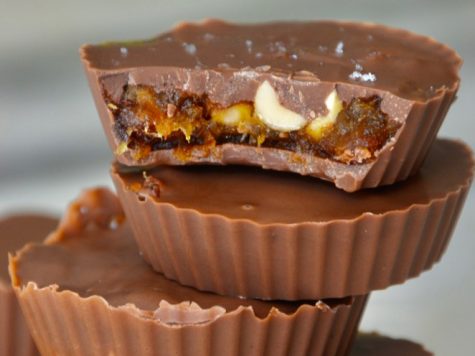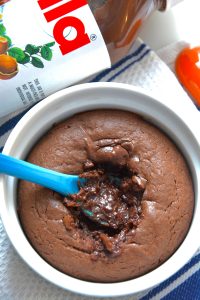You might drink gin all the time and consider yourself a well-adjusted, very happy person. Same! But after the third martini, you might start to ask yourself: what even is gin? And why am I ordering so many light-up hula hoops on eBay?
Someone, probably on the Internet, once told me gin was just juniper-flavored vodka. But like asking Siri to do your taxes, it’s not that simple. I talked to gin expert Nathan O’Neill, the head bartender of the NoMad Bar, to get the full story. Both gin an vodka are made from neutral grain spirits (like rye, barley, wheat, corn) but gin gets steeped with botanicals (fancy word for dried herbs, roots, and citrus peels) and redistilled. So you might sip a gin and taste juniper and tell everyone at the bar I’M REALLY GETTING NOTES OF JUNIPER. Whereas vodka is distilled and redistilled to a point where you taste the notes of the grain its made from, like hey, this vodka tastes like…wheat, whoa. In that line of thinking, you could start a bar argument that gin is juniper-flavored vodka, “but in another sense, you’re making something from that product that’s completely new” said O’Neill.
And when it comes to gin, beautiful, perfect gin, there are even more specific types, including Genever and Old Tom, that have distinct characteristics and usages and are totally worth seeking out. We had O’Neill break it down for us along with the Bon Appétit test kitchen’s go-to brands for each:
Photo by Laura Murray
London Dry
London Dry, originating in…England…but produced all over the world, is what most people think of when they think of gin—and it’s what you typically get in a G&T or martini. You know the stuff: Beefeater, Tanqueray, Bombay Sapphire. “You’re definitely gonna get juniper,” said O’Neill, “because juniper is the most dominant flavor within the gin and hence the reason it’s called gin (juniper is genévrier in French).” Juniper, as in the Christmas-tree flavored berry often found in certain Bath and Body Works products, but it mellows out when distilled. Some London Dry gins steep fresh citrus peels or dried peels before distillation and that gives them a bright, citrus flavor—and why a twist of lemon really does magic in a martini, bringing all of that out even more.
“What’s termed a ‘dry gin’ means there’s no added (artificial) flavoring, the flavors are all natural from the botanicals,” said our gin guide, plus no added sweeteners. “If the gin has sweetness, it’s more than likely it contained a botanical like licorice.”
Recommended Gin: Beefeater
Photo by Laura Murray
Plymouth
Plymouth gin is technically a style of gin, but only one distillery produces it and it’s one of the oldest recorded distilleries in the U.K. It’s been through a lot–different owners, a little thing called World War II, the general progression of time and vodka[LOL]. O’Neill schooled us: “Plymouth was very special because it named in the Savoy Cocktail Book, and it was in 23 gin recipes in the book. It was one of the most significant cocktail books in the world and still is to this day. So to have the actual name physically in it, is very very important. With that, it allowed Plymouth to become very popular in the first part of the 20th century when a lot of gins were coming onto the market.” You can also tell the gin has history from the old school ship on the bottle—the British Royal Navy loved it so much they requested a higher proof gin just for them (seems like a good idea), and that’s known as Navy Strength and the reason you have a Tweety Bird tattoo on your shoulder blade.
Flavor-wise, it’s drier than London Dry and more citrus forward, and you might get a spicier finish from their blend of seven botanicals: juniper, coriander seed (adds acidity), dried sweet orange peels, cardamom, Angelica root, and Orris root. Because of those roots, said our gin guru, “the gin has a bit of an earthier feel, and it’s a little bit softer in juniper. It has a nice kind of oily texture, which works fantastic in things like martinis and negronis, anything that has a slightly bitter flavor, Plymouth gin work really, really well.”
Bonus ingredient: Holy water. Just kidding, but the small amount of water in Plymouth is special. It’s pure water from the Dartmoor reservoir, which, per O’Neill who’s been there and literally drunk the water, “gives an exceptionally clean and fresh flavor to the gin.” I’m just going to roll with him on that one.
Recommended Gin: Plymouth
Photo by Laura Murray
Old Tom
Old Tom is the corduroy-clad hipster of gins. After a quick discussion of the death rate versus birth rate in the 16th, 17th, and the 18th centuries, professor O’Neill basically said that back then, gin got a bad rap because so many people were making their own. And it was terrible. “They would have used things like licorice or a sweetening agent to actually sweeten the gin. So it became known as bathtub gin, that style. Old Tom was originally a sweetened style of gin that was produced and it came around the middle of the 18th century, and Old Tom was the street name for the gin.”
Nowadays, it’s taken a full turn, he said. “Old Tom is very good gin, the botanicals are usually distilled, the sweetness in it normally comes from a larger amount of licorice that’s in the distillation; they don’t add flavor after.” It doesn’t taste like licorice, in case you’re wondering, but that different balance of ingredients affects the texture and “perception of taste,” said O’Neill. It’s richer in flavor than London Dry, which is why “Old Tom works better in mixed drinks and pre-Prohibition cocktails, anything that has bitter flavors.” At the NoMad, they use it in a Tom Collins because it helps to bring the actual citrus down a notch in the traditionally lemony-sweet drink. O’Neill also recommends it in a Martinez (gin, sweet vermouth, maraschino liqueur, bitters).
Ransom’s Old Tom is aged in wine barrels, so it takes on that caramel color, but some Old Tom gins are clear, like Hayman’s [LINK?]. Similarly, some use added sugars to sweeten while others rely on botanicals to do the trick. Different brands are creating their own take on the historic gin, so there’s some leeway here, I just wish they’d bring back all the ads with cats in them.
Recommended Gin: Ransom
Photo by Laura Murray
Genever
This is the original style of gin, dating back to 16th-century Holland. The base grains are malted (so the grain starts to germinate aka liiiiive and then that process is halted), similar to whiskey, giving it a more robust flavor. It’s also flavored with juniper and botanicals, but less so than the other gin types.
O’Neill explained the process: “Instead of using a neutral grain spirit, Genever distillers actually create a malt wine spirit, which is the predominant flavor of the gin. The grains are left to ferment for five days or so, and then turned into a mash, which is similar to how whiskey is made. Then they’ll add different botanicals, including juniper, but the difference here between the dry gins and Genever is that juniper is not the predominant flavor. The actual gin is a lot more malty. Flavors added can be cloves, caraway, ginger, nutmeg. So you’ve got vaguely different style of taste, and you certainly have way more earth notes within it.” You won’t often taste citrus like with London Dry, some distillers don’t even add it at all.
If Old Tom is considered “rich” in flavor, Genever is even richer, meaning it’s best in rich cocktails, with something like sweet vermouth, or stirred with a tiny bit of bitters and a touch of sugar like a gin Old Fashioned. “The idea is the malt wine has such a predominant flavor, if you’re mixing it with something richer in flavor, it’s going to work really well,” O’Neill said. We feel like a millionaire just thinking about it.
Recommended Gin: Boomsma




